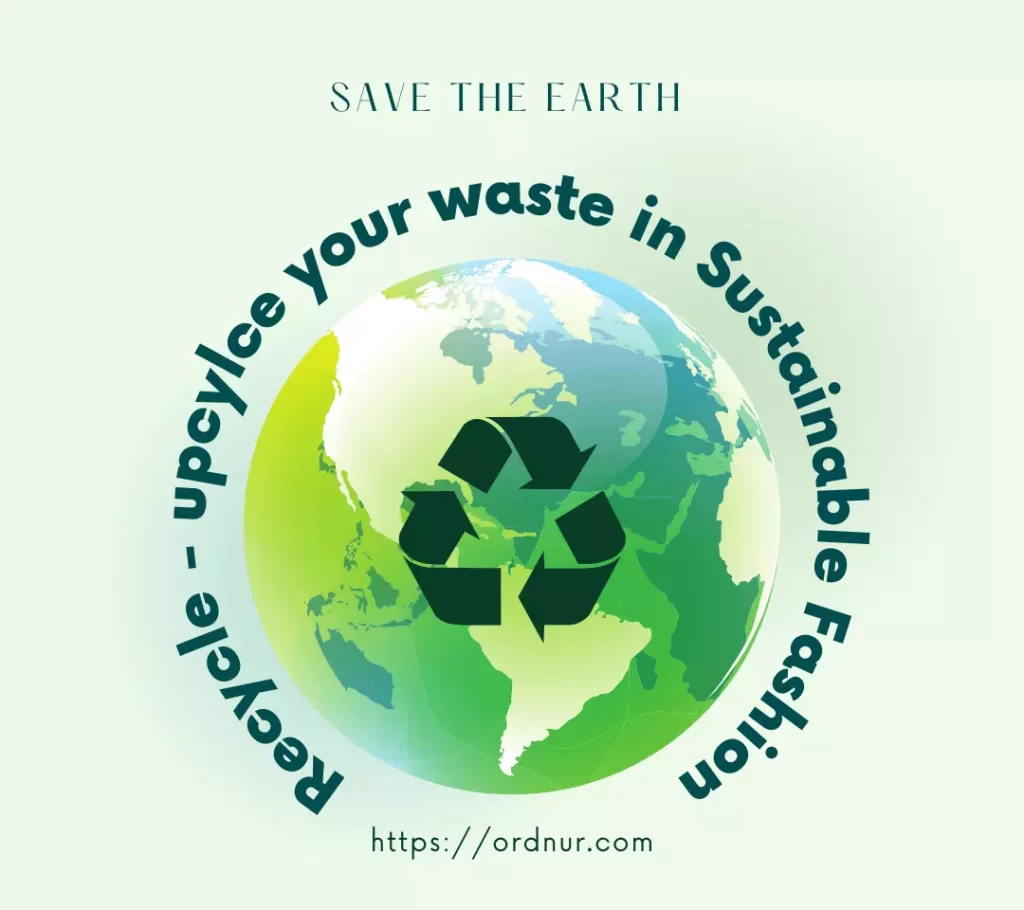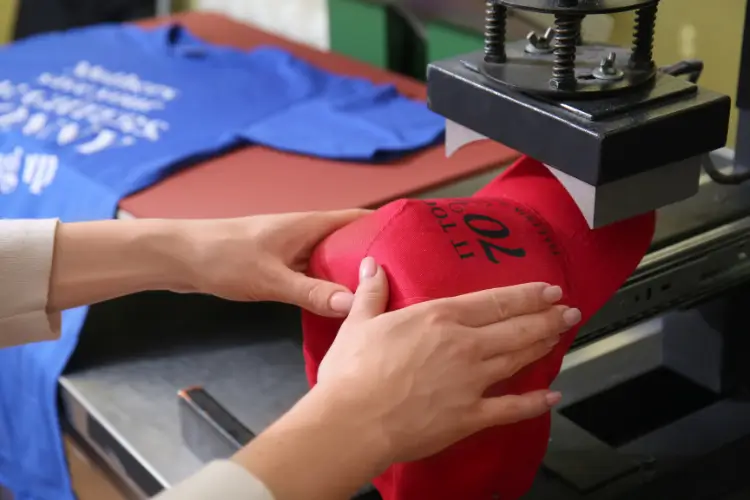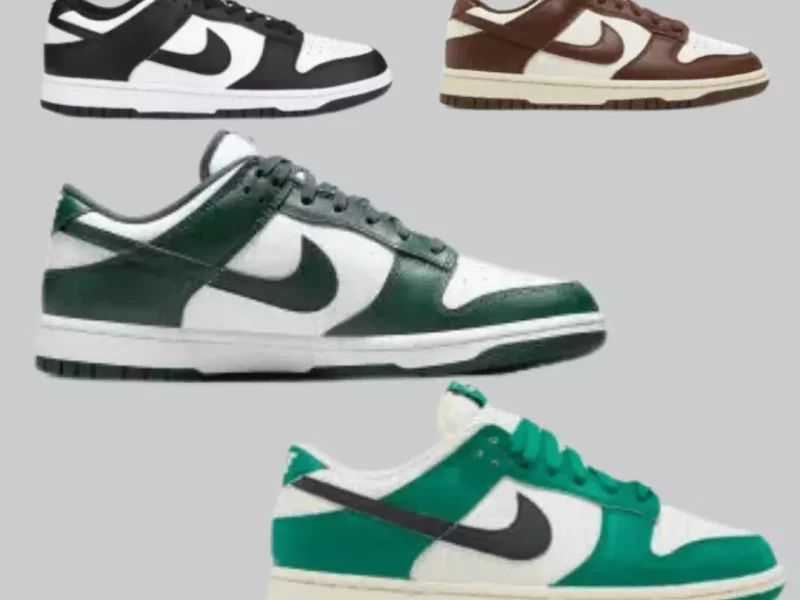What kind of justice do you make with the clothes that you no longer wear back? Do you donate, recycle, or keep them away? Whatever you do with your clothes, be acknowledged that there are always options for both recycling and Upcycling.

Be your reason to protect the environment or waste less, the future of upcycling and recycling is near. All we need is to acknowledge our overconsumption and fashion brands’ overproduction. Gone are the days when fashion brands use to be the largest polluters around the world. By embracing these small baby steps to sustainable growth, the future of upcycling and recycling, both need to be acknowledged and practiced by all, globally. To get more information on how you can minimize the overproduction of brands, go through the article!
What do We mean by Upcycling and Recycling Clothing?
Upcycling refers to the practice of creating new by utilizing existing waste materials. Upcycling in sustainable fashion production is a practice traced back many years. Besides, Upcycling works in that area where you can offer an alternative way to mass production of clothes. The two main types of waste are accepted as pre-and post-consumer waste.
For instance, pre-consumer waste in the fashion industry means the excess material that can repurpose into a new design. On the other hand, post-consumer are those clothes that can follow the procedure of buying, using, and giving away.
Meanwhile, Recycling refers to the preparative reuse of raw materials that can be further used in the future. In the recycling process, the material follows a cycle where the material gets broken down into pieces to create new products. Upcycling is a part of processing recycling. Here, the products hold their original form and find a new purpose.
Why are Upcycling and Recycling on a Continuous Trend?
Both Upcycling and Recycling are at the top of the trend in the fashion industry. The reason is obvious. Fashion brands want to work for a purpose where the future is sustainable and better. The brands have now motivated for being zero-waste and ethical at the same time. Indeed, Upcycling is now the trend of creative use of the fabric that you discard. The reasons behind both upcycling and recycling being buzzwords are given below:
1. Minimizing The disposition of the Landfill
Fashion brands are now responsible for adopting ways where the disposition of landfill would be less than before. Brands are now more conscious about their behavior being wasteful.
2. The Rise of Thrift Shops
Unwanted clothes with a few scratches or damage are now getting sold to different thrift shops. As a result, there is an industry with no production now getting profitable. Although this idea has both advantages and disadvantages. Only a few people donate this apparel.
3. ‘Re-sellable” Products Being Exported to the Global South
Most of the products which can be re-sellable in developed countries, get exported to the developing countries in the Global south. This method is indeed great for trading partnerships with other countries but ultimately lose is of fashion brands.
4. Is Recycling Technology getting Replaced by Upcycling?
It is not true that upcycling is taking over Recycling techniques. But Upcycling takes a long time to get back to the new product form although upcycling has a value-added option to produce components.
5. Sustainable Fixation of Garment Backlog
Upcycling has become a significant trend being the prominent solution for fixing the garment backlog. Both upcycling and recycling are now getting embraced by brands based on their ranges. After all who does not want to reuse materials to save the environment through pollution reduction?
6. Consumers being Sustainable Users
New products always surprise us. It is not an issue whether the product has been bought, upcycled, or recycled. Nowadays, consumers have become responsible for their own clothes. Maybe it is because they tend to realize how a product after getting utilized its full “useful period” gets back to reshape different things. The trend of carbon footprint has a way contributed to this realization of the customers.
How Do the Both Upcycling and Recycling Work?
Both Upcycling and Recycling are practices that have the re-purpose of waste material. Although consumers are familiar with the ‘recycling’ phrase, the upcycling method has its purpose.
Upcycling utilizes the raw resources and breaks them down intending to produce a new product. On the other hand, the upcycling objective has the re-purpose with incorporated used materials into the assortment of the new goods.
Recycling work in 3 stages: Collection of recyclable materials, Processing of recyclable facilities, and re-manufacturing of other new products.
How Sustainable Both Upcycling and Recycling Are?
Both upcycling and recycling are renowned as the “Value-Added” products. Because of this driving force, these both processes are getting acknowledged in the aspiring fashion industry. “Recycling” is like a first cousin to Upcycling. No matter which relationship they prefer to choose, the sustainability ladder takes a continuous supply of materials to become the new product.
Both upcycling and recycling have a major role in the criteria of being sustainable in the social, economic, and environmental dimensions. Being sustainable is not about being less wasteful. Keeping this strategy in mind, both upcycling and recycling contribute to the elimination of waste products to preserve nature. However, the fashion industry is shifting towards grinding blended technology by moving away from staple filaments. Both recycling and upcycling follow the sustainable activities of extensive design for reuse, maintaining the carbon footprint, and air pollution reduction.
Fashion Brands are Relying on Upcycled and Recycled Clothes
Upcycling has become a trend in fashion. The same goes for recycling as well. The ecological values of reuse have given our clothes a new life cycle to fast fashion. Fashion brands are relying on upcycled and recycled clothes for many reasons. For instances:
- Reviving old parts of cloth that may be sold in a different aspect.
- Shaping new behaviors of consumers.
- Bringing sustainability into daily life activities.
- Changing the traditional notion of fashion.
- Solving the trend-setting to recycling the garments.
Upcycling and recycling are both a reaction to the overproduction of textiles. It depends on trends, and how sustainability works on consumers behind fashion brands relying on these methods. The reusing and circulating possibilities may bring sustainability to the fashion industry.
Benefits of Upcycling and Recycling Process
There are plenty of benefits to the process of upcycling and recycling. Give a shot at some points given below:
The Benefits of Upcycling Process
- Reducing Landfill Waste
- Decreasing CO2 Emissions
- Turning Upcycling into a Business
- Preserving the Environment morals
- Minimizing overproduction or over-making.
- Preserving natural resources.
- Supporting Entrepreneurship
- Helping unleash your originality.
- A unique activity for Kids.
The Benefits of the Recycling Process
- Reducing the waste amount.
- Does require fewer resources.
- Higher Savings
- Reducing greenhouse or CO2 gas emissions.
- Increasing economic security
- Saving energy
- Helping to create jobs.
Drawbacks of Both Upcycling and Recycling
Both upcycling and recycling have drawbacks. For instance:
Drawbacks of Upcycling:
- It is not easy to upcycle waste materials and turn them into valuable something.
- Purchasing essential supplies may cost a bit higher.
Drawbacks of Recycling:
- Originality can never be traced back to the newer products.
- If any business or brand collects individual waste from the consumer directly from their house, it may increase the cost of production. As well as this technique may pollute the environment due to the collector’s car gases.
The Impactful Journey of Upcycling and Recycling in the Fashion World
Upcycling requires the creation of new garments by cutting and stitching any discarded clothing. Upcycled clothes can be recyclable at the useful life’s end. The re-purposing of garments is getting bigger due to the blessing of upcycling and recycling methods. The impact of both upcycling and recycling is huge. Let us show you how they impact the environment:
- Fashion industry’s embracing the idea of upcycling.
- Converting into the upcycling material has become easier.
- Giving value to the waste materials.
- Conserving a proper quantity of resources.
- Serving upcycled clothes in the existing business is great than creating completely new clothes from the start.
- There is no need of producing new clothes rather saving raw materials can serve a better purpose.
- Finally, have you ever given a thought to the impact of global warming? This is one of the most impactful journeys that no one thinks about. Still, it makes the silver line of changing the polluted environment.
Recycling or Upcycling Clothes Ideas at an Individual Level
From an individual level, you can either recycle or upcycle your clothes. Sustainable fashions are at your doorstep. All you need is to welcome them by cracking good ideas until your clothes become in bad condition. For instance:
Idea 01: Swap your Clothes.
Try to host a clothes-swapping get-together with your friends and family members. Share with your friends the photos of the items. Or tell your guests that you are thinking of trying out their products on different occasions.
Idea 02: Buy and Re-Sell Your Clothes
This idea may not get you the independence of earning but also you can get rid of your old clothes. Just ensure, your products directly go to your next consumer rather than deposition into the landfill.
Idea 03: Give your Clothes a Go Ahead from Circular Fashion Brands
This may be new to you but guess what, it is always about supporting a brand thinking of improving the environment. Circular Fashion Brands are those brands that use recycled materials and sell them to customers. In return, customers buy them, use them, and back the clothes to the brand for getting further recycling process. No doubt, it becomes an innovative way to ensure a future free of circular and waste-free.
Idea 04: Mend your Worn Clothes
Whether it is visible or invisible mending, the procedure takes a lot of time to sew on. Sewing buttons, patches, or holes, in your clothes, may become an experimental tool. You even do not need to be a crafty type to get a fun way to re-use or upcycle your old clothes! The upcycled ideas are patching, Window panels with laces. You can sew a pocket on your cloth, Jeans into a mid-length skirt, Scarf into a summer cover-up, and transform curtains into clothing.
Making New from Old: Predicting the Future Fashion Industry
Sustainability was always about the 4Rs: Reduce, Reuse, Recycle, and Recover. Among the industry of fashion stakeholders, Now, sustainability means 4R+1U. Here, the U means Upcycling, a significant pillar of the sustainable framework. The future is now on depending on sustainable practices that everyone has a stake in.
However, the apparel industry is always concern about the wastage issue and that is what becomes the core point of sustainable methods. The fashion industry is welcoming brands or any company that works on the circular economy concept because of the rising awareness among consumers of eco-friendly products.
There is an importance of upcycling and recycling products. Brands are now concerned about taking the post-consumer upcycling initiative with wearable clothes with better schemes. Fashion brands can either have their own upcycling or recycling initiative, or they can use surplus materials, and transform them into fashionable clothing. Also, there are other methods that fast fashion brands can adopt:
- Reselling clothes by upcycling at the first choice.
- Customers buying and selling pre-used garments from the circular fashion brand.
Apart from all these insights from the fashion brands, consumers from their side should get the trend of buying less fast fashion clothes. Moreover, it is an obligation to fully reuse used clothes and other apparel. Only then we can predict a complete view of sustainable fashion!
FAQs
1. Is there any difference between Upcycling and Recycling?
Okay, so there is a thin difference between this two upcycling and recycling. Upcycling means making additional changes in the used fabrics. It just turned into something by getting mended or patched up.
Meanwhile, recycling requires an entire breakdown of the used material and constituting it into some other fabric or product through mechanical and chemically maintaining processes.
2. How do both Upcycling and Recycling Clothing Protect the Environment?
It all depends on value. Where recycling converted material provides the same value as the original product, the upcycled-transformed material turns into some creations with a higher value. It is high time, the fashions got down from the model of take-make-dispose. These are some challenges that may work as hindering the sustainability of protecting the environment. Another challenge can be logistical or sorting the collected clothes for recycling. Other than these problems, upcycling and recycling can both protect the environment by eroding over-consumption.
3. What Should you Choose between upcycling or recycling?
There is no obligation to choose one from another to be sustainable. The decision is yours whether you would like to engage in both. The thing is upcycling tends to offer a long-term solution for preventing any land-fill pollution. Whereas recycling has a long chain of procedures to reuse and reuse. It is long-term as well. But breaking the raw materials into a completely new form may cause you some money.
4. Can the Fashion Industry challenge the blooming demand for trendy clothes by being sustainable?
Luxury fashion houses or any fast-fashion houses are the main culprits when it comes to overconsumption or landfilling. Many brands have already shown up by embracing the circular economy in reducing the fast fashion waste problem. It can be demanding to be sustainable and still be on trend. But one brand must encourage consumers the older saying from World War two, “Make, Do, and Mend.”
5. Is sustainable fashion or Zero-Waste Fashion the Same?
Sustainable always prefer two things: Over consumption and over-production. These two things get experimented on apparels in fast fashion. But zero style is a concept that aims to lessen textile waste. And it is achievable in many ways: through using sustainable materials, minimal fabric use, using recycling materials, or upcycling the used garments. So, you can say that being sustainable is a pre-condition of Zero-Waste Fashion.
Conclusion
To slow down our textile waste and overproduction, we must be responsible for our used clothes. Purchasing fewer clothes is not something about being poor. Rather, you will be able to take care better of your clothes which are high quality. The alternative ways of clothing repair, recycling, or upcycling are what make you a better consumer. The responsibility is not a one-way thing. Instead, both fashion brands and consumers can play a key role in the fashion industry to make these alternative ways mainstream and sustainable.



